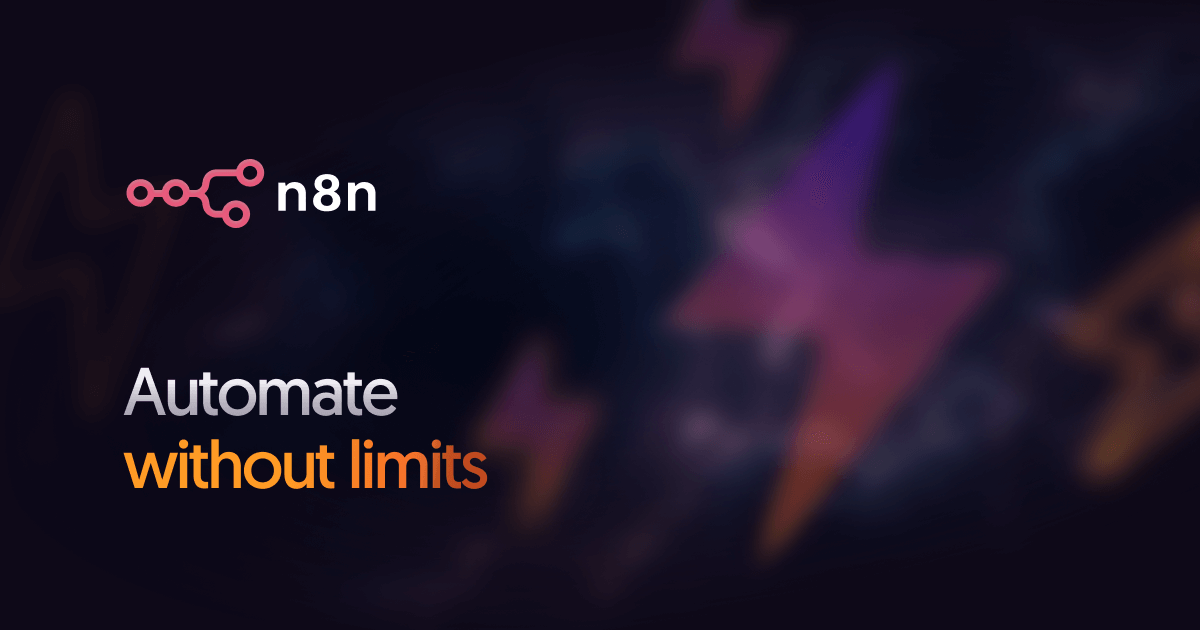From No-Code to AI Agents: My Journey with Jotform, Glide, Make, n8n and LangChain
- peterperecz
- Aug 21
- 5 min read
Updated: Aug 22

Over the past months, I’ve been on many journeys. Kind of a competition there but the technical one was certainly one of the most exciting ones. Along the way, I experimented with several tools – and each stop taught me something valuable: their strengths, and their limits too. This post is my attempt to share that journey as a structured, subjective comparison, so if you are looking for the right tool for your business or project, you can find some orientation here.
Jotform
What is it?
Jotform is a popular online form builder. At its core, it helps you collect and manage data with drag-and-drop ease, and it’s also great for setting up simple internal approval workflows with built-in automation.
Where it’s perfect
Quick data collection (surveys, registrations, feedback)
Internal automation (approval flows, notifications)
Prototyping ideas fast
Limits I found
It ends where forms end. Once data needs to live inside processes, you want to use dynamic data or want to connect outside your organization, you hit its ceiling. For me, it was great for early experiments, but I quickly needed more.
Learning curve
Extremely easy – anyone can create a form and powerful in-house automations in minutes without prior experience.
Where to use (examples)
Healthcare: patient intake forms
Education: event registrations
SMEs: quick feedback loops from employees or customers
My experience
Jotform was where I realized how quickly you can test ideas if you don’t touch code. I even built a product quality inspection data collection and basic communication process that worked perfectly for a company setting. But it also showed me how quickly you run out of road if your idea grows wings.
Glide
What is it?
Glide turns spreadsheets into mobile or web apps. You connect a Google Sheet or Excel file, and you instantly have a functional app.
Where it’s perfect
Rapid prototyping of simple apps
Internal tools (dashboards, checklists)
Admin workflows where data sits in tables
Limits I found
Great for quick wins, but once workflows grew complex, or when I wanted to integrate a chatbot, it started to feel too narrow.
Learning curve
Easy to moderate – you can start fast if you know spreadsheets, but customizing beyond the basics requires some practice.
Where to use (examples)
Training & HR: attendance tracking, onboarding apps
Field service: inspection checklists
Non-profits: volunteer coordination apps
My experience
I built a complete administration application for managing TWI trainings. It felt magical to spin up an app in hours – but as soon as I wanted deeper automation, Glide was not enough. The paradox: you start incredibly fast, like a wonder. On those basics, you can even build surprisingly complex applications. But to do so, you need at least a basic understanding of databases and coding principles.
Make.com
What is it?
Make.com (formerly Integromat) is an automation platform. It connects different apps and lets you design workflows with drag-and-drop modules.
Where it’s perfect
Automating repetitive tasks
Connecting tools that don’t talk to each other
Building prototypes for chatbots, data flows, and reporting
Limits I found
For me, it was the first taste of “real automation.” I even built a Telegram chatbot prototype here. But when it came to AI agents or handling complex branching logic, it quickly reached its ceiling – it’s simply not made for that as I see.
Learning curve
Moderate – it’s visual, but requires understanding how data flows between steps. A non-technical user can get far, but deeper scenarios need patience.
Where to use (examples)
E-commerce: sync orders across platforms
Marketing: automate email campaigns
SMEs: connect finance, HR, and CRM tools
My experience
Make showed me how powerful no-code automation can be. But it also taught me where the “no-code” approach starts to struggle – when intelligence and flexibility are needed.
n8n
What is it?
n8n is an open-source automation platform, similar to Make.com, but far more flexible. It can be self-hosted, extended, and integrated into complex architectures.
Where it’s perfect
Modular, complex workflows
Managing AI agents step by step
Building scalable internal automation solutions
Limits I found
Freedom comes at the price of complexity. While I could finally design agent logic in detail, I also realized that orchestration alone isn’t enough – you need a strong AI backbone to do real thinking. I believe n8n is great for state-machine type AI agents, but may not be the best for orchestrated, multi-agent systems.
Learning curve
Moderate to steep – starting is visual and friendly, but the more you customize, the more technical it becomes.
Where to use (examples)
Manufacturing: production monitoring and quality control flows
IT: automated incident response
Startups: AI agent orchestration and modular automation
My experience
Here I felt like I had stepped into the big league. I could model agent logic, build modular tool workflows, and prepare for enterprise-grade automation. I even built a complex assistant with user management, database handling, AI agents – and a watchdog system on top. Good stuff, maybe the best for protos and small scale applications.
LangChain / LangSmith
What is it?
LangChain is a framework for building AI applications with large language models. LangSmith is its companion tool for monitoring, debugging, and evaluating those applications.
Where it’s perfect
Turning AI prototypes into production-ready apps
Handling memory across conversations
Ensuring structured and reliable outputs
Monitoring and improving AI performance
Limits I found
It’s not just plug-and-play. LangChain demands a deeper understanding of how AI models work, and requires a developer mindset. It’s powerful, professional, and robust — but not something you can just pick up from one day to the next.
Learning curve
Steep – powerful, but requires developer mindset and patience.
Where to use (examples)
Customer service: scalable AI chat agents
Manufacturing: AI training assistants (like our TWI project)
Finance & Legal: reliable document processing AI
My experience
This was the point where the professional world opened up. It also made me wonder: maybe it’s not the tech, but me, who has reached the limits. Or maybe not. I keep learning, curious to see how far this journey can go.
Summary Table
Tool | What it is | Perfect for | Limits | Learning curve | Example use cases |
Jotform | Online form builder | Fast data capture, quick automation | Stops at forms & dynamic data use | Very easy | Healthcare forms, event registrations |
Glide | Spreadsheet-to-app builder | Rapid app prototypes, internal tools | Narrow when workflows get complex | Easy–moderate | HR onboarding, field inspections |
Automation platform (SaaS) | Connecting apps, automating tasks | Limited for AI agents | Moderate | Marketing automation, e-commerce sync | |
n8n | Open-source automation platform | Modular workflows, AI agent orchestration | Technical complexity | Moderate–steep | Manufacturing flows, IT automation |
LangChain/Smith | Prompt engineering + AI framework/monitor | Production-ready AI, complex memory, reliability | Steep learning, dev mindset | Steep | AI chatbots, document processing |
Closing thoughts
Looking back, the journey itself was the teacher. Each tool was perfect for its purpose – until I outgrew it. From forms to apps, from automation to AI agents, I realized that there’s no “one tool fits all.”
But that doesn’t make any of them less valuable. On the contrary – for the purpose they were designed for, and with the level of knowledge you have at a given moment, each of them can be absolutely perfect. They all have their own place where they shine.
So my encouragement is simple: don’t be afraid to start small and experiment. Every step teaches you something new. The real secret is knowing when to start simple, and when to move on.





Comments